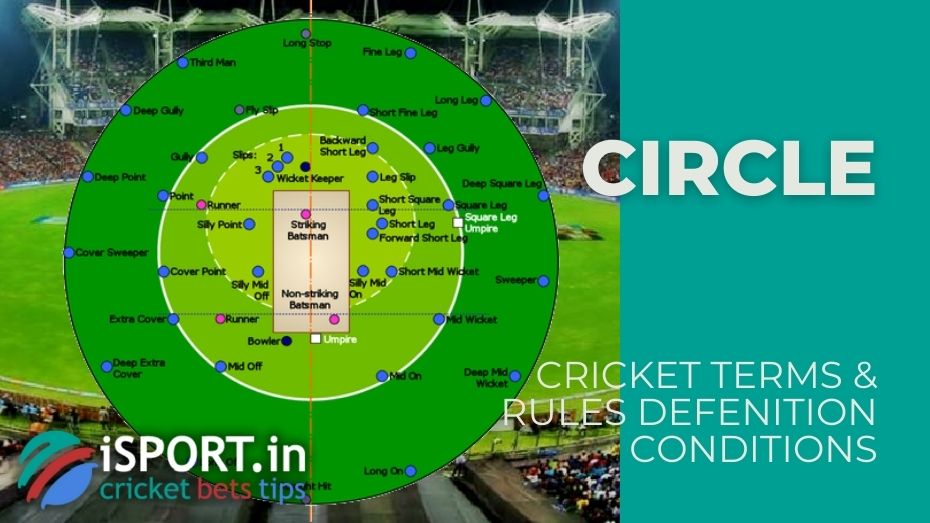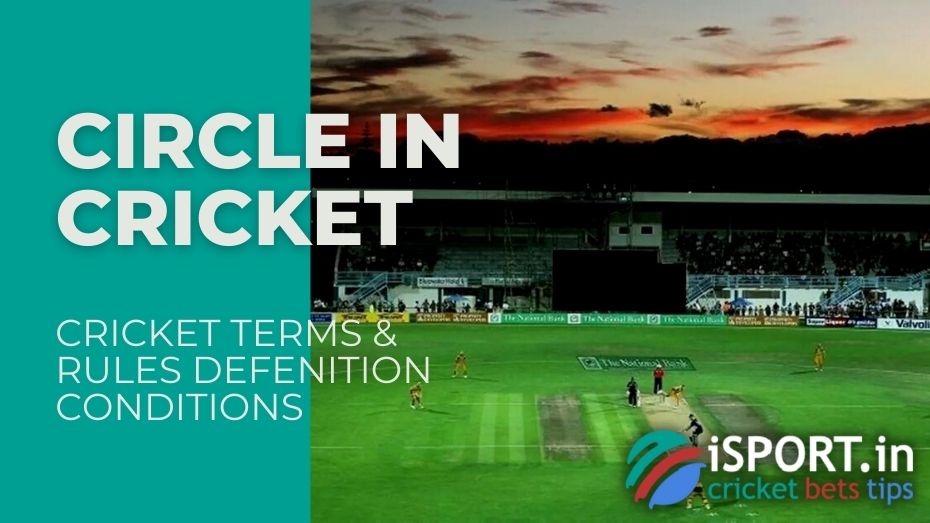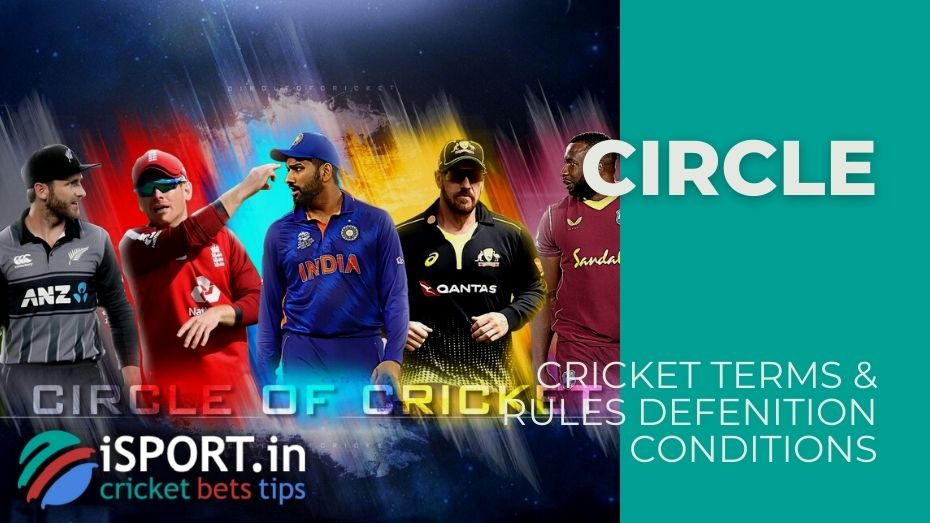Circle in Cricket

There are limits placed on the sports ground during cricket contests, and these restrictions vary according to the structure of the matches. Cricket players are prohibited from employing some unlawful practices throughout the game as a result of this policy. Additionally, batters are encouraged to make huge and lengthy strokes as a result of restrictive measures. In the following paragraphs, we will provide a concise explanation of the part of the field that is referred to as a circle.

Circle in Cricket: General Information
The locations of fielders on the field are decided by the leader of each cricket sports team, who is responsible for setting the positions. At the present time, professional cricket tournaments are primarily separated into two major formats: a test championship, also known as a first-class championship, and a championship with a restricted number of overs, often known as a one-day or short Twenty20 match.
In contrast to one-day matches, test matches and first-class matches have far less limitations on the field. In fact, there are almost no limits at all in test matches. The limits that are placed on the playing field have been altered on several occasions over the history of one-day cricket. In order to prevent the player with the bat from playing an overly defensive style of cricket, this is done to compel the player to hit the balls away. There are already regulations in place for cricket events that have a restricted number of overs. Some examples of these games are One Day International, Twenty20, and 100-ball cricket.
As you know, men and women play cricket. Therefore, different restrictions are used for them. The total diameter of the cricket ground can vary from 450 to 500 feet. We describe what is inside a large ellipse.
The male circle in cricket is an oval that is made up of two semicircles that have been drawn. Each half-circle should have a 30-yard radius. The central stump of the gate may be found near the intersections of the two centers. These two semicircles are joined together by lines, and the sum of these two semicircles constitutes the circle in cricket. This limitation is also referred to as the infield in some circles.
The fact that there are wickets within the circle is something that you are already aware of. After that, two circles with a radius of fifteen yards are formed around these wickets. The center of the circle is the wicket, and the circle is drawn around the wicket. The term “close-infield” refers to the area that is formed when two circles are joined to one other. Not only that, but the pitch zone is already located within the close-infield, which is where all of the most important events of the match take place.

Which positions of players are affected by the circle in cricket, sometimes known as the infield? Competitions played in the One-Day International format are subject to the so-called PowerPlay rules. In matches with innings of fifty overs, it is not permitted for more than two fielders to be deployed behind the circle during the first ten overs of the innings.
In the majority of cases, this is referred to as the opening game. Additionally, between the scores of 11 and 40 overs, there is a maximum of four players who are permitted to leave the circle. The maximum number of fielders that can be stationed beyond the 30-yard circle during the 41-50 overs phase does not exceed five.
As for T20 matches, the number of players there is the same as in the one-day format, but the limit is valid for the first six overs. Starting from the 7th over, no more than five players can be allowed outside the circle in cricket called infield.
In women’s cricket competitions, the radii of the drawn restrictions are different from the men’s ones. Here, the circle in cricket infield has a radius of 25 yards, and the two circles that form the close-infield are 13 yards.
Women’s restrictions were first introduced in the 2005 ODI between England and Australia. They have softer rules. There are two blocks of five overs in women’s matches, on which a maximum of 3 field players must be outside the circle. Moreover, the period of these blocks is chosen by the team captain. After two blocks are completed, the number of field players outside the 25-yard zone increases to 5.
Circle in Cricket: History
The decade of the 1980s saw the official implementation of the first limits, known as PowerPlay regulations, implemented on the cricket pitch. The number of players who may be behind the circle in cricket in the first 15 overs was limited to just two by the year 1992 (this limit was decreased to ten overs in 2005), and after that, five field players could continue to be behind this zone.
Since 2008, the team that is batting has been given the opportunity to select one of three periods, one of which is necessary at the beginning of the game. The team that is serving has the ability to select the second period, and the batter team has the ability to select the third period.
A new set of regulations regarding limits in one-day matches was implemented by the International Cricket Council in the year 2015. There are three blocks in the PowerPlay rules, but since 2012, they have been reduced to two. We discussed these blocks in the paragraph that was devoted to the One-Day International. At the same time, the most recent modifications have made it possible to terminate the PowerPlay rules.
Every day more and more interesting news appears on our website. Go to other sections and find out any information about cricket.
Read more information about cricket in our section with cricket terms.
